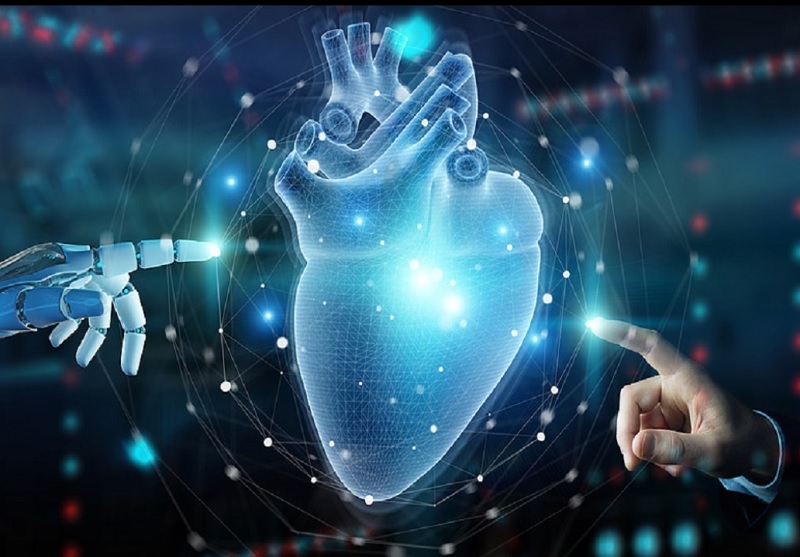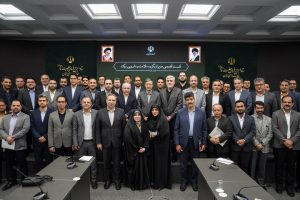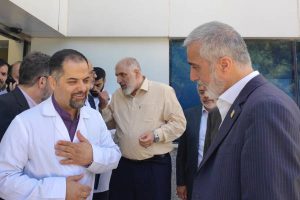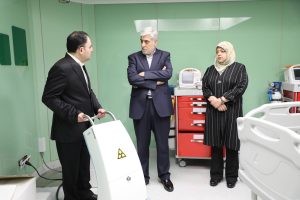
Artificial Heartbeat: Dawn of AI-Integrated Cardiac Systems
Barekat Health & Pharmaceutical Group: In the realm of medical technology, few advancements have been as groundbreaking as the integration of artificial intelligence (AI) with cardiac systems. The development of artificial hearts has traditionally focused on mechanical and biological solutions to replace or support the failing human heart. However, the advent of AI has introduced a paradigm shift, enabling these devices to not only mimic the heart’s function but also synchronize with the brain’s neural activity.
This fusion of technology and biology promises to redefine the future of cardiac care, offering personalized and dynamic treatment options for patients with heart conditions.
Convergence of AI , Cardiac Technology
Artificial hearts, such as the BiVACOR device, represent significant strides in mechanical circulatory support. These devices are designed to replace the heart’s pumping function, providing life-saving support to patients awaiting heart transplants or those ineligible for such procedures . The integration of AI into these systems enhances their functionality, allowing for real-time monitoring and adjustment of heart functions based on the patient’s physiological needs.
One of the most promising developments is the synchronization of artificial hearts with brain activity. Recent studies have shown that the heart possesses its own intrinsic nervous system, often referred to as the “heart brain,” which plays a crucial role in regulating cardiac rhythm . By interfacing AI-driven artificial hearts with this neural network, it is possible to create a system that dynamically adjusts heart function in response to both internal and external stimuli, including those originating from the brain.
Brain-Heart Synchronization: A Symbiotic Relationship
The concept of brain-heart synchronization involves establishing a bidirectional communication pathway between the brain and the artificial heart. This communication allows the heart to respond to neural signals related to stress, physical activity, and emotional states, thereby optimizing cardiac performance in real-time. Conversely, the heart’s condition can influence brain activity, creating a feedback loop that enhances overall physiological stability.
For instance, during periods of physical exertion, the brain signals the heart to increase its output to meet the body’s heightened oxygen demands. An AI-integrated artificial heart can interpret these signals and adjust its pumping rate accordingly. Similarly, emotional stress can trigger physiological responses that affect heart rate and rhythm. An AI-enabled heart can detect these changes and modulate its function to maintain homeostasis.
Technological Foundations & Innovations
The integration of AI into artificial hearts relies on several key technologies:
- Neural Interfaces: Devices like the Stentrode, a stent-mounted electrode array, enable direct communication between the brain and external devices without the need for invasive surgery .
- Machine Learning Algorithms: These algorithms analyze real-time data from the heart and brain to predict and respond to physiological changes, ensuring optimal heart function.
- Optogenetics: This technique uses light to control cells within living tissue, offering precise control over heart cells and facilitating the development of biological pacemakers .
- Advanced Imaging and Monitoring: Technologies such as MRI and EEG allow for continuous monitoring of heart and brain activity, providing valuable data for AI systems to process and respond to.
Clinical Applications & Future Perspectives
The potential applications of AI-integrated artificial hearts are vast:
- Personalized Cardiac Care: AI systems can tailor heart function to the individual needs of the patient, adjusting in real-time to changes in activity levels, stress, and other factors.
- Enhanced Recovery Post-Surgery: By synchronizing with brain activity, these systems can facilitate faster and more efficient recovery following cardiac surgeries.
- Long-Term Monitoring: Continuous data collection allows for early detection of potential issues, enabling proactive interventions and reducing the risk of complications.
Looking ahead, the integration of AI with artificial hearts could lead to fully autonomous cardiac systems capable of adapting to a wide range of physiological conditions. This advancement holds the promise of not only extending the lives of patients with heart conditions but also improving their quality of life by providing more responsive and personalized care.
Ethical Considerations & Challenges
While the prospects of AI-integrated artificial hearts are promising, they also raise important ethical and practical considerations:
- Patient Autonomy: Ensuring that patients have control over their treatment options and are fully informed about the capabilities and limitations of AI systems.
- Data Privacy and Security: Safeguarding sensitive health data from unauthorized access and ensuring compliance with privacy regulations.
- Long-Term Reliability: Assessing the durability and reliability of AI-integrated devices over extended periods.
- Access and Equity: Ensuring that advancements in cardiac technology are accessible to all patients, regardless of socioeconomic status.
Addressing these challenges will be crucial in the widespread adoption of AI-integrated artificial hearts and in realizing their full potential in improving cardiac care.
Conclusion
The integration of artificial intelligence with artificial hearts marks a significant milestone in the evolution of cardiac care. By synchronizing with the brain’s neural activity, these systems offer a dynamic and personalized approach to heart function management. As technology continues to advance, the future of cardiac care lies in the seamless integration of AI, biology, and patient-centered care, heralding a new era in the treatment of heart diseases.
-
Barkat Group specialized meeting

-
Safa Appointed as Barekat General Director

-
Barekat Health & Pharmaceutical Group at the 10th Iran Pharma Exhibition

-
Ali Safa visits Sobhan Oncology & Sobhan Darou

-
Pirsalehi & Safa visit Saman Daroo 8 Knowledge-based Company

-
Barekat Managing Director Visits Samen Pharmaceutical Company

-
Honoring Pharmacists’ Day

-
Barekat Top Executives Visiting to Barekat Hospital

